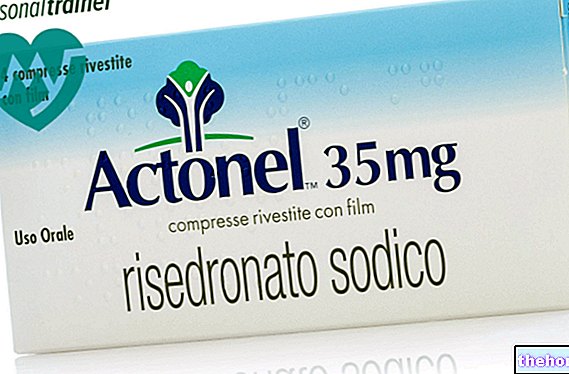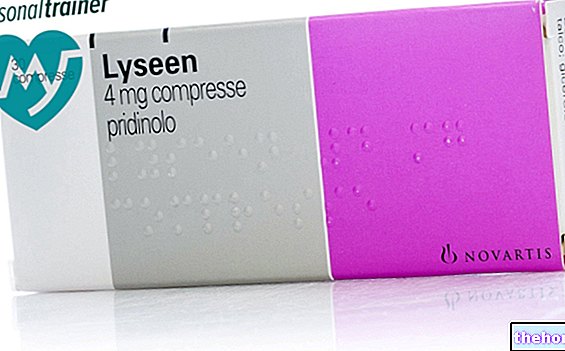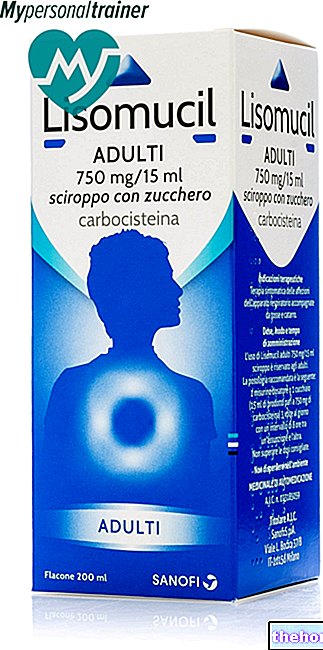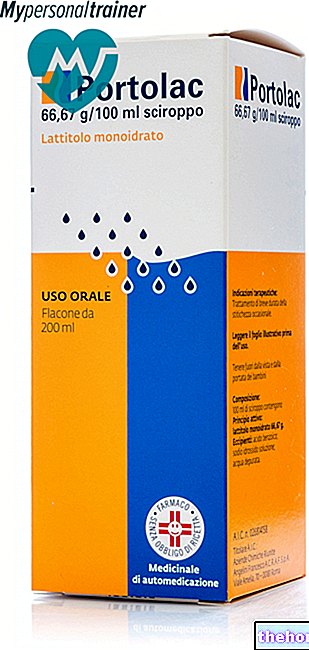Active ingredients: Erythromycin
ERITHROMYCIN IDI 3% GEL - Tube 30 g
Package inserts of Erythromycin - Generic Drug are available for pack sizes:- ERITHROMYCIN IDI 3% GEL - Tube 30 g
- ERITHROMYCIN IDI 3% CREAM ERITHROMYCIN IDI 3% SKIN SOLUTION
Why is Erythromycin - Generic Drug used? What is it for?
PHARMACOTHERAPEUTIC CATEGORY:
antimicrobial for the treatment of acne.
THERAPEUTIC INDICATIONS.
Erythromycin IDI 3% Gel is indicated for the topical treatment of acne and in particular for those papulopustular forms with a dominant inflammatory component.
Contraindications When Erythromycin - Generic Drug should not be used
Hypersensitivity to the active substance or to any of the components of the product and to other antibiotics belonging to the macrolide family.
Precautions for use What you need to know before taking Erythromycin - Generic Drug
Erythromycin IDI 3% Gel, must be used only for external use and not for ophthalmic use. It is necessary to avoid contact of the gel with eyes and mucous membranes. The use, especially if prolonged of topical products, can give rise to phenomena of awareness. In this case, stop the treatment and consult your doctor to adopt suitable therapy.
Interactions Which drugs or foods can modify the effect of Erythromycin - Generic Drug
Tell your doctor or pharmacist if you have recently taken any other medicines, even those without a prescription.
Concomitant use with other anti-acne medications, peels, flaking or abrasive agents, can cause accumulation of the irritant effect. In this case, stop the treatment.
Topical erythromycin and clindamycin should not be used simultaneously due to their antagonism.
Warnings It is important to know that:
As with all antibiotics, erythromycin can cause an overdevelopment of insensitive microorganisms: in this case, treatment must be suspended and appropriate therapy instituted.
PREGNANCY AND BREASTFEEDING.
Ask your doctor or pharmacist for advice before taking any medicine.
Studies on the safety of erythromycin therapy during pregnancy and lactation have not been conducted, therefore in these cases the drug should be administered in cases of real need under the direct supervision of the doctor.
EFFECTS ON THE ABILITY "TO DRIVE VEHICLES AND ON THE" USE OF MACHINERY
Not relevant
Dose, Method and Time of Administration How to use Erythromycin - Generic Drug: Posology
Apply the preparation 1-2 times a day according to the doctor's judgment, after careful washing with non-alkaline soap and after having dried the face well. Treatment should be continued until clinical improvement, on average one to three months.
Overdose What to do if you have taken an overdose of Erythromycin - Generic Drug
In case of accidental ingestion / intake of an excessive dose of Erythromycin IDI, notify your doctor immediately or go to the nearest hospital.
IF YOU HAVE ANY DOUBTS ABOUT THE USE OF Erythromycin IDI, ASK YOUR DOCTOR OR PHARMACIST.
Side Effects What are the side effects of Erythromycin - Generic Drug
Like all medicines, Erythromycin IDI can cause side effects, although not everybody gets them.
Erythromycin has demonstrated a large clinical safety margin. In some cases, transient local intolerance may occur, which generally does not require discontinuation of treatment.
During the use of the drug, a feeling of dryness of the skin may occur, relative to the treated areas.
Notify your doctor or pharmacist of any undesirable effects not described in this leaflet.
Before using the drug, check that the expiry date shown on the box is not exceeded.
Expiry and Retention
Expiry: see the expiry date printed on the package
The expiry date refers to the product in intact packaging, correctly stored.
Warning: do not use the medicine after the expiry date shown on the package.
Store at a temperature not exceeding 25 ° C.
Medicines should not be disposed of via wastewater or household waste. Ask your pharmacist how to throw away medicines you no longer use. This will help protect the environment.
KEEP THE MEDICINAL PRODUCT OUT OF THE SIGHT AND REACH OF CHILDREN.
COMPOSITION:
Erythromycin IDI "3% gel". 100 g of gel contain:
Active principle:
- Erythromycin base 3.00 g
Excipients:
- Hydroxypropyl cellulose 1.50 g
- Ethyl alcohol 95 ° g 95.50
PHARMACEUTICAL FORM AND CONTENT:
30 g tube of 3% gel for cutaneous use
Source Package Leaflet: AIFA (Italian Medicines Agency). Content published in January 2016. The information present may not be up-to-date.
To have access to the most up-to-date version, it is advisable to access the AIFA (Italian Medicines Agency) website. Disclaimer and useful information.
01.0 NAME OF THE MEDICINAL PRODUCT
ERITHROMYCIN IDI 3% GEL
02.0 QUALITATIVE AND QUANTITATIVE COMPOSITION
100 g of gel contain:
Erythromycin base 3,000 g
03.0 PHARMACEUTICAL FORM
30 g tube of 3% gel for dermatological use.
04.0 CLINICAL INFORMATION
04.1 Therapeutic indications
Erythromycin IDI 3% Gel is indicated for the topical treatment of acne and in particular for those papulopustular forms with a dominant inflammatory component.
After topical administration, erythromycin has been shown to be effective in the treatment of primary and secondary bacterial infections of the skin.
Erythromycin has a spectrum of action towards Gram-positive and in particular towards Streptococci and Staphylococci; it has been shown to be effective against Corynebacterium minutissimum strains and against Propionibacterium acnes. After local applications, erythromycin is able to cause a significant decrease in the total number of bacterium and propionibacterium in the pilosebaceous canal. This antibiotic effect is partly responsible for the efficacy of topical erythromycin in acne.
The antibiotic activity is also accompanied by an anti-inflammatory effect. In vitro studies have shown that it is able to induce a marked decrease in the chemotropism of human leukocytes.
04.2 Posology and method of administration
Apply the preparation 1-2 times a day according to the doctor's judgment, after careful washing with non-alkaline soap and after having dried the face well. Treatment should be continued until clinical improvement, on average one to three months.
04.3 Contraindications
Hypersensitivity to one of the components of the product and to other antibiotics belonging to the macrolide family.
04.4 Special warnings and appropriate precautions for use
Erythromycin IDI 3% Gel, must be used only for external use and not for ophthalmic use. It is necessary to avoid contact of the gel with eyes and mucous membranes.
As with all antibiotics, erythromycin can cause an overdevelopment of insensitive microorganisms: in this case, treatment must be suspended and appropriate therapy instituted.
The use, especially if prolonged of products for topical use, can give rise to sensitization phenomena. In this case, interrupt the treatment and consult the doctor to adopt suitable therapy.
04.5 Interactions with other medicinal products and other forms of interaction
Concomitant use with other anti-acne medications, peels, flaking or abrasive agents, can cause accumulation of the irritant effect.
04.6 Pregnancy and lactation
Use only when needed, and under direct medical supervision.
04.7 Effects on ability to drive and use machines
No negative effects of the preparation on the ability to drive or on the use of machines have been reported, nor are expected.
04.8 Undesirable effects
Some local intolerance may occur.
During the use of the drug, a feeling of dryness of the skin may occur, relative to the treated areas.
04.9 Overdose
Overdose syndromes have never been reported.
05.0 PHARMACOLOGICAL PROPERTIES
05.1 Pharmacodynamic properties
Erythromycin is an antibiotic belonging to the macrolide group, produced from a strain of Streptomyces erythreus.
ATC code: D10AF02
Erythromycin acts by inhibiting protein synthesis, without affecting the synthesis of nucleic acid.
05.2 "Pharmacokinetic properties
The systemic absorption of the active principle is normally absent at the given concentration.
05.3 Preclinical safety data
The LD50 of subcutaneous erythromycin is about 1800 mg / kg in mice. The oral dose of 2000 mg / kg does not cause mortality. The administration for 3-6 months of doses between 40 mg / kg and 220 mg / Kg in dogs do not alter weight gain, nor do they cause haematological alterations or abnormalities of liver or kidney function.
06.0 PHARMACEUTICAL INFORMATION
06.1 Excipients
Excipients: ethyl alcohol, hydroxypropylcellulose.
06.2 Incompatibility
Topical erythromycin and clindamycin should not be used simultaneously due to their antagonism.
06.3 Period of validity
24 months.
06.4 Special precautions for storage
Store at a temperature not exceeding 25 ° C
06.5 Nature of the immediate packaging and contents of the package
Aluminum tube of 30 g of gel.
06.6 Instructions for use and handling
Not relevant.
07.0 MARKETING AUTHORIZATION HOLDER
IDI FARMACEUTICI srl - POMEZIA (Rome)
Via dei Castelli Romani 83/85
08.0 MARKETING AUTHORIZATION NUMBER
A.I.C Code: 029171016
09.0 DATE OF FIRST AUTHORIZATION OR RENEWAL OF THE AUTHORIZATION
20 March 1995/20 March 2000
10.0 DATE OF REVISION OF THE TEXT
December 2007




























